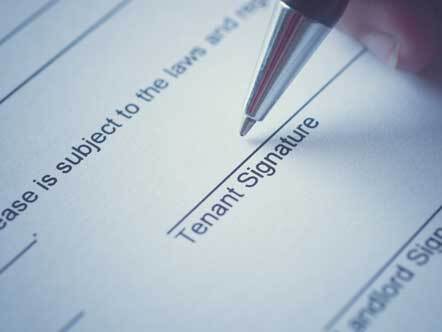If you have any maintenance issues whilst renting a property through Lawlors you can follow these helpful tips put together by our Property Management Team.
Fully managed tenants
If you have a maintenance issue whilst renting a property through Lawlors as a fully managed tenant you can quickly and easily report a repair through fixflo, our online reporting system.
If you are not a fully managed tenant then you will need to report the issue to your landlord or their chosen suppliers. These will be in the welcome pack you received when you moved in.
Report a repair now
Controlling your central heating
During freezing spells, keep the heating on all the time to prevent the pipes from freezing. If you are out you can turn the thermostat down to maintain a temperature of 15 degrees.
How to control the temperature
- The thermostat maintains the temperature in your property. To set it, turn the dial so that the arrow or marker is against the temperature setting you want.
- You should also note that on many systems, the individual radiators can be controlled via the turn knobs on the thermostatic valves on the side.
- You may be able to get further information for controlling your heating via the Internet.
- If your boiler is not being used during the summer months don’t leave it until the last minute to turn it on when it gets cold.
- Test the boiler before the end of the summer as heating engineers are much busier in the autumn and winter.
Bleeding a radiator
When to do it: If the top part of the radiator is cold, while the bottom is warm, this is because air is trapped in the system (which should be filled with water). Bleeding the radiator releases this air and allows hot water to fill the whole system.
Before bleeding
If the whole radiator is cold, check that the radiator valve is turned up. If more than one radiator is cold, the whole system may need to be checked by a heating engineer. Call your property manager during working hours.
Turn off the heating system before bleeding; otherwise the pump might draw more air into the system. You will need a special radiator key, available from most DIY and hardware shops. You will also need a rag or cloth and a bucket or bowl.
How to bleed
The bleed valve is the smallest square nut at the top end of the radiator. Place the key over the valve and hold the cloth around it to catch any water. Gently turn the key anti-clockwise until you hear a hiss – this is the air being released. When water starts to come through, turn the key back clockwise to shut the valve off. DO NOT unscrew the valve completely as the grub screw will come out.
Leaking, burst or frozen pipes
When pipes leak
- Place a dish or bowl underneath the leak.
- Pull back any carpets and lay down newspapers or towels to absorb any dampness.
- If its a slow or minor leak advise your property manager on the next working day.
When pipes burst
- Turn off the water at the main stopcock, and switch off any water heaters.
- Open all taps to drain water from the system.
- Can it be isolated? Some appliances may have their own isolation valve, you can use these to stop their water supply.
If electric fittings get wet
- Do not touch.
- Turn off electricity at the consumer unit.
If you need to turn off all electricity (e.g. because of water penetration), use the main ON/OFF switch on the electricity consumer unit (fuse box).
Checking your fuse box
Check your consumer unit (fuse box), It will either have fuses or trip switches. Modern electric circuits are fitted with a circuit breaker fuse system. If a fault develops, a switch is tripped and the circuit is broken, stopping power to the circuit. Older units will have fuses.
When a switch is tripped
Open the cover on the consumer unit to expose the trip switches. Check which switches have tripped to the OFF position and put them back to the ON position. For more detail, refer to any user manual supplied.
Plugs
Overloaded circuits are common causes of a trip or blown fuse. Therefore do not overload plug sockets by using multiple plug adaptors.



